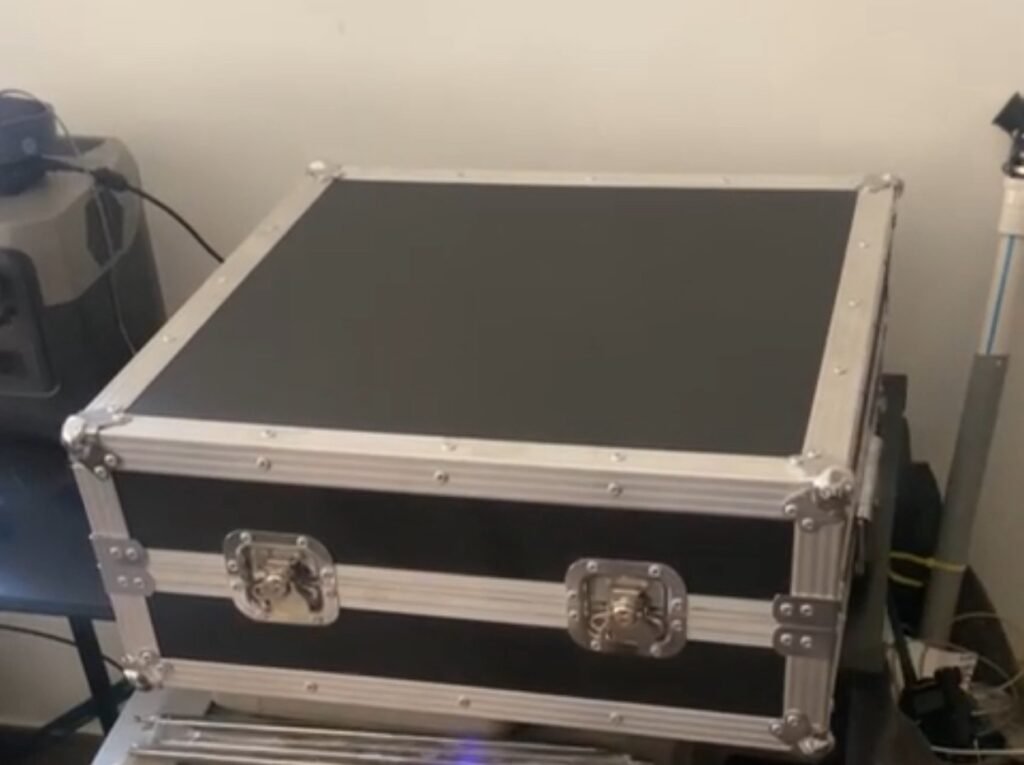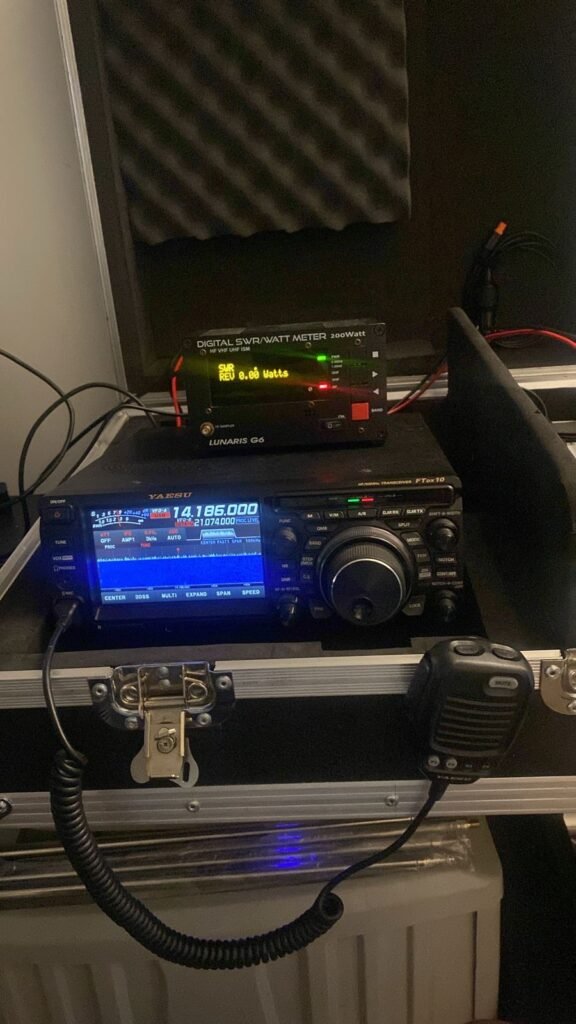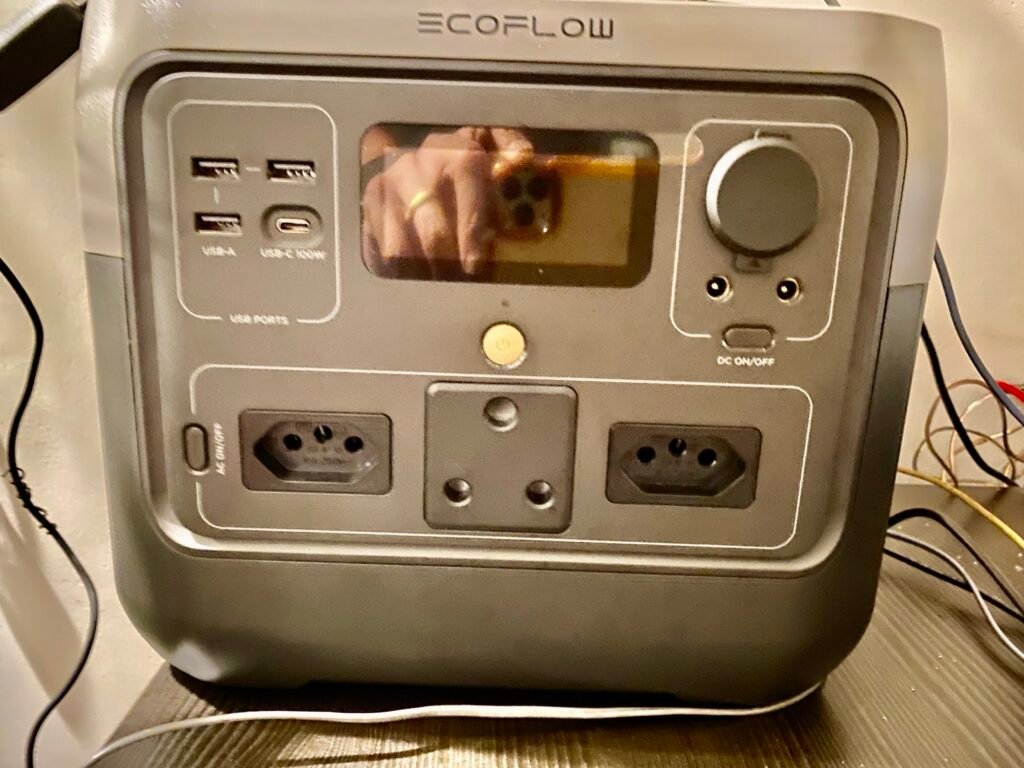
One of my most exciting projects has been building a portable HF station in a go-box. This setup includes an aluminum-shielded go-box that acts as a Faraday cage, a Riverflow Pro 2 battery powerhouse for extended operation, and 5.6 whips configured as a V-antenna. This project has been invaluable for field operations and disaster management.

Components of the Portable HF Station
1. Aluminum Shielding (Faraday Cage)
The aluminum shielding serves as a Faraday cage, protecting the equipment from electromagnetic interference (EMI) and enhancing operational reliability.
- EMI Protection: Shields the equipment from external electromagnetic fields, reducing noise and interference.
- Durable Construction: Provides a robust and lightweight enclosure for the go-box.
2. Riverflow Pro 2 Battery Powerhouse
The Riverflow Pro 2 battery powerhouse is a high-capacity, portable power source that ensures long-lasting operation for the HF station. Key features include:

- High Capacity: Provides ample power to sustain extended operation in the field.
- Portable Design: Lightweight and compact, making it easy to transport.
- Reliable Performance: Delivers consistent power output, essential for maintaining stable communication.
- Fast Charging: Equipped with advanced technology for quick recharging.
3. 5.6 Whips Configured as a V-Antenna
The 5.6 whips, when configured as a V-antenna, enhance signal transmission and reception. This setup is ideal for portable operations, offering improved performance over traditional single-element antennas.
- V-Antenna Configuration: Optimizes signal gain and directivity, improving overall communication range and clarity.
- Easy Deployment: Quick to set up and adjust in the field, making it perfect for rapid deployment scenarios.
Building the Portable HF Station
1. Constructing the Go-Box
- Selecting the Box: I chose a sturdy and appropriately sized aluminum box to house all components, ensuring it had adequate space and ventilation.
- Installing the Shielding: I lined the interior of the box with aluminum to create the Faraday cage effect, ensuring all seams and openings were well-covered to maximize EMI protection.
- Mounting Components: I securely mounted the HF transceiver and other essential components within the box, using brackets and padding to prevent movement and damage during transport.
2. Integrating the Battery Powerhouse
The Riverflow Pro 2 battery powerhouse is kept separate from the go-box for flexibility. It connects to the HF transceiver and other devices, providing reliable power in the field.
- Power Connections: Connect the Riverflow Pro 2 battery to the HF transceiver and other devices. Ensure all connections are secure and well-insulated.
- Charging Setup: Include a charging port or setup to easily recharge the battery powerhouse without removing it from the go-box.
3. Setting Up the V-Antenna

- Deploying the Whips: Extend the 5.6 whips and configure them in a V-antenna setup. Use insulators and stakes to secure the antenna in place.
- Connecting to the Transceiver: Run the antenna feedline into the go-box and connect it to the HF transceiver. Ensure the connection is secure and weatherproof if used outdoors.
Field Testing and Performance
I conducted thorough field tests to ensure the portable HF station operates effectively in various environments. I evaluated signal strength, clarity, and overall performance, making adjustments as necessary to optimize the setup.
Applications in Disaster Management
The portable HF station’s robust design and high-performance capabilities make it a valuable tool for disaster management:
- Emergency Communication: Provides reliable communication during emergencies when conventional infrastructure may be compromised.
- Rapid Deployment: Quickly establish a communication hub in disaster-stricken areas.
- Resilient Operation: The Faraday cage and high-capacity battery ensure the station remains operational in adverse conditions.
Recognition by Goa State Disaster Management Authority
The innovation and utility of this mobile station recently earned recognition from the Goa State Disaster Management Authority. They praised the setup for its potential to enhance disaster response and coordination, highlighting its importance in emergency preparedness and management.
Building a portable HF station in a go-box with aluminum shielding, a Riverflow Pro 2 battery powerhouse, and 5.6 whips configured as a V-antenna significantly enhances mobility and reliability for ham radio operations. This innovative setup demonstrates the practical applications of ham radio technology in both everyday use and emergency situations.
In upcoming articles, we will explore additional projects, such as integrating digital modes and remote operation systems. Stay tuned for more exciting innovations in the world of ham radio.
Leave a Reply
You must be logged in to post a comment.